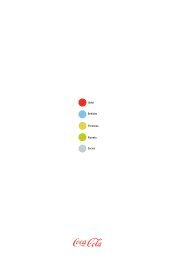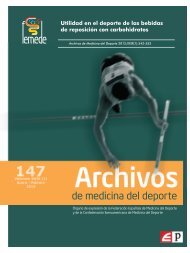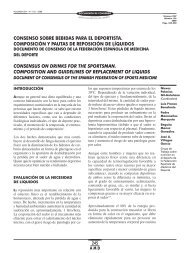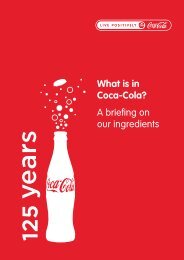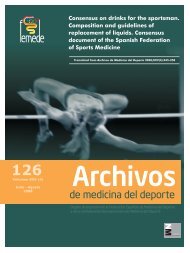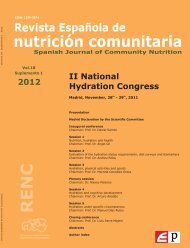athletes' medical information - Coca-Cola
athletes' medical information - Coca-Cola
athletes' medical information - Coca-Cola
You also want an ePaper? Increase the reach of your titles
YUMPU automatically turns print PDFs into web optimized ePapers that Google loves.
athletes’ <strong>medical</strong> <strong>information</strong><br />
Vitamin D<br />
Vitamin D is classified as a fat-soluble vitamin<br />
which acts as a hormone. It has important<br />
functions in the body including maintenance of<br />
good bone health, muscle function and<br />
immunity. Vitamin D is found in some foods, but<br />
our major source comes from sunshine<br />
exposure. There is evidence that many people<br />
have deficient or sub-optimal vitamin D status.<br />
Many Paralympic athletes are ‘at risk’ due<br />
either directly to their disability, or factors<br />
associated with it.<br />
Vitamin D deficiency can lead to several<br />
health issues including increased risk of bone<br />
injuries, chronic musculoskeletal pain and viral<br />
respiratory tract infections. Reversal of<br />
sub-optimal vitamin D status in athletes may<br />
have beneficial effects on athletic performance<br />
and health.<br />
Athletes at risk of vitamin D deficiency<br />
include those who:<br />
Train indoors<br />
Have dark skin<br />
Live farther away from the equator<br />
Wear clothing that covers most or all of<br />
their body<br />
Regularly use sunscreen or consciously<br />
avoid the sun<br />
Such athletes should be screened ,and<br />
if vitamin D levels are sub-optimal, a course<br />
of vitamin D supplementation and perhaps<br />
judicious sunshine exposure should be<br />
undertaken under <strong>medical</strong> supervision.<br />
Iron<br />
Iron plays an important role in the transport<br />
of oxygen in the blood (as haemoglobin) and<br />
muscle (as myoglobin), and inadequate iron<br />
status can obviously impair performance and<br />
recovery. There is some evidence that an<br />
athlete’s iron requirements may be elevated due<br />
to increased losses due to their training load.<br />
However, most athletes who become iron<br />
deficient or anaemic do so because of poor iron<br />
intake. Athletes who are at high risk of such<br />
problems are those who restrict energy intake<br />
and dietary variety. Since meats are a major<br />
source of well-absorbed iron, vegetarian eaters<br />
will need to plan their meals carefully to find<br />
alternative iron sources. Females are also at<br />
risk because of increased iron requirements<br />
due to menstrual blood losses matched against<br />
a smaller food intake. Iron-rich eating will help<br />
to reduce this risk.<br />
Athletes who are at risk of poor iron status<br />
should have this monitored periodically. Athletes<br />
who are undertaking altitude training often like<br />
to do this too, to ensure that they have sufficient<br />
iron stores to allow the adaptations to their<br />
specialised training demands. Routine use of<br />
iron supplements is not wise: too much is just<br />
as harmful as too little. Self-medication with<br />
iron supplements may not address the real<br />
causes of an athlete’s fatigue or other issues of<br />
poor eating and may do more harm than good.<br />
31<br />
12-113-COC_Paralymics_Booklet_20120718.indd 31<br />
7/18/12 4:29 PM





